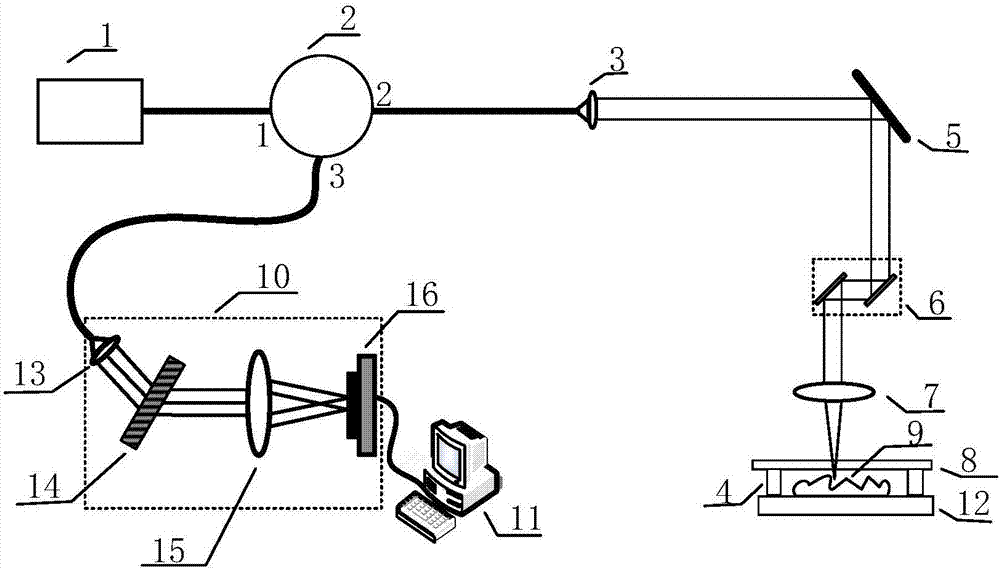Article surface morphology detection method and device
A technology of surface topography and detection method, applied in the field of surface topography detection of objects, can solve the problems of under-sampling effect, limit measurement speed, limit axial measurement accuracy, etc., so as to improve system stability, eliminate system vibration, and eliminate environmental problems. the effect of interference
- Summary
- Abstract
- Description
- Claims
- Application Information
AI Technical Summary
Problems solved by technology
Method used
Image
Examples
Embodiment Construction
[0038] The technology will be further described below in conjunction with the accompanying drawings.
[0039] The object surface topography detection device includes: a low-coherence light source 1, a spectrometer, a three-terminal circulator 2, a first lens 3, a mirror 5, an x-y scanning galvanometer 6, a second lens 7 and a sample stage 12. The light emitted by the low-coherence light source 1 enters through the port 1 of the three-terminal circulator 2, and the light coming out of the port 2 of the three-terminal circulator 2 is collimated by the lens 3 and then hits the reflector 5, and the light after changing the direction hits x-y The x vibrating mirror of the scanning vibrating mirror 6 is shot from the x vibrating mirror to the y vibrating mirror of the x-y scanning vibrating mirror 6, and the light passing through the y vibrating mirror is focused by the second lens 7 onto the surface of the sample 9 to be measured, and passed through the scanning vibrating mirror 6 ...
PUM
 Login to View More
Login to View More Abstract
Description
Claims
Application Information
 Login to View More
Login to View More - R&D
- Intellectual Property
- Life Sciences
- Materials
- Tech Scout
- Unparalleled Data Quality
- Higher Quality Content
- 60% Fewer Hallucinations
Browse by: Latest US Patents, China's latest patents, Technical Efficacy Thesaurus, Application Domain, Technology Topic, Popular Technical Reports.
© 2025 PatSnap. All rights reserved.Legal|Privacy policy|Modern Slavery Act Transparency Statement|Sitemap|About US| Contact US: help@patsnap.com



